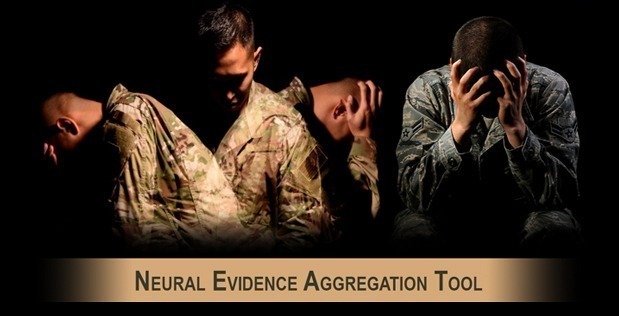New DARPA initiative aims to harness cognitive science, sensors and machine learning to detect early brain signs of depression, anxiety, and suicidal ideation
 New Cognitive Science Tool to Shed Light on Mental Health (DARPA press release):
New Cognitive Science Tool to Shed Light on Mental Health (DARPA press release):
Since Sept. 11, 2001, more than 30,000 active duty members and veterans have taken their own lives – four times as many as those killed in post-911 military operations. Current methods to detect early signs of behavioral and mental health risk factors rely on self-reporting and screening questionnaires, which can’t reliably predict suicidality. Effective behavioral health assessment is a mission-critical capability requiring novel tools to identify and help those at risk.
Today, DARPA announced the Neural Evidence Aggregation Tool (NEAT) program. NEAT aims to develop a new cognitive science tool that identifies people at risk of suicide by using preconscious brain signals rather than asking questions and waiting for consciously filtered responses.
“NEAT is a proof-of-concept effort attempting to develop a new tool for mental and behavioral health screening that moves us beyond historical and current methods of questions and consciously filtered responses,” said Greg Witkop, a former Army surgeon and current program manager in DARPA’s Defense Sciences Office. “Using the preconscious will hopefully enable us to detect signs of depression, anxiety, or suicidal ideation earlier and more reliably than ever before. If successful, NEAT will not only significantly augment behavioral health screening, but it could also serve as a new way to assess ultimate treatment efficacy, since patients will often tell their clinicians what they think the clinician wants to hear rather than how they are truly feeling.”
By way of analogy, NEAT is envisioned to be for mental health what an MRI is for the physical body: a way to assess injury. As an MRI can detect an early meniscal tear prior to a more serious injury developing that can impact a soldier’s readiness, NEAT would identify psychological and behavioral changes before they impact readiness … “Ultimately, NEAT intends to augment current behavioral health screening programs by providing clinicians with previously unavailable information to enable earlier interventions and more reliable measures of successful treatment,” Witkop said. “Just as the objective evidence of an X‑ray or MRI is sometimes necessary to help a military member not feel like they are letting their unit down because of a visible injury, NEAT will attempt to provide objective evidence of invisible injuries for help to be provided in time.”
More information and registration details:
A virtual Proposers Day for potential proposers is scheduled for March 15, 2022.
Neural Evidence Aggregation Tool (NEAT) Proposers Day
- Program Objective and Description: NEAT will develop a novel cognitive science tool that could be used to augment behavioral health screenings by accurately detecting what someone believes to be true. By bringing together recent advances in cognitive science, neuroscience, physiological sensors, data science and machine learning, the NEAT program will develop processes that can measure what a person believes to be true by: 1) presenting carefully crafted stimuli that are designed to evoke specific preconscious mental processes; 2) detecting the resulting preconscious processes using current physiological sensors combined with state-of-the-art signal processing and neural analytics; and 3) using advances in machine learning and data science to aggregate the preconscious responses collected across a set of stimuli into a final measurement that quantifies what a person believes to be true for a specific topic.
News in Context:
- DARPA-funded nonsurgical neurotechnologies push the frontier of brain-machine interfaces
- Eight research teams working with DARPA to discover best ways to activate neuroplasticity and accelerate learning
- Five reasons the future of brain enhancement is digital, pervasive and (hopefully) bright
- 10 neurotechnologies about to transform brain enhancement and brain health


